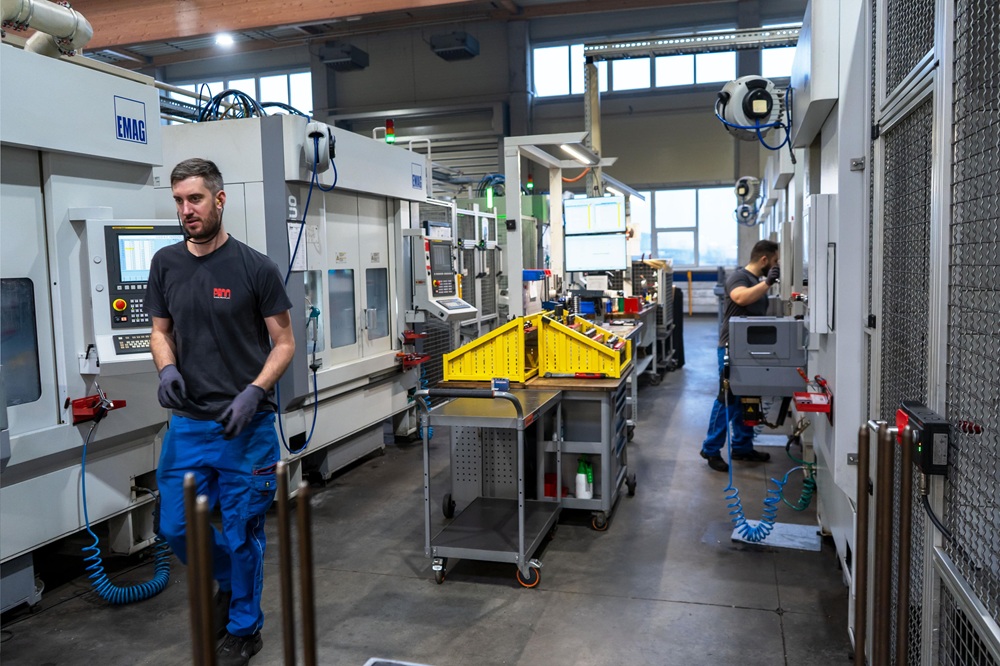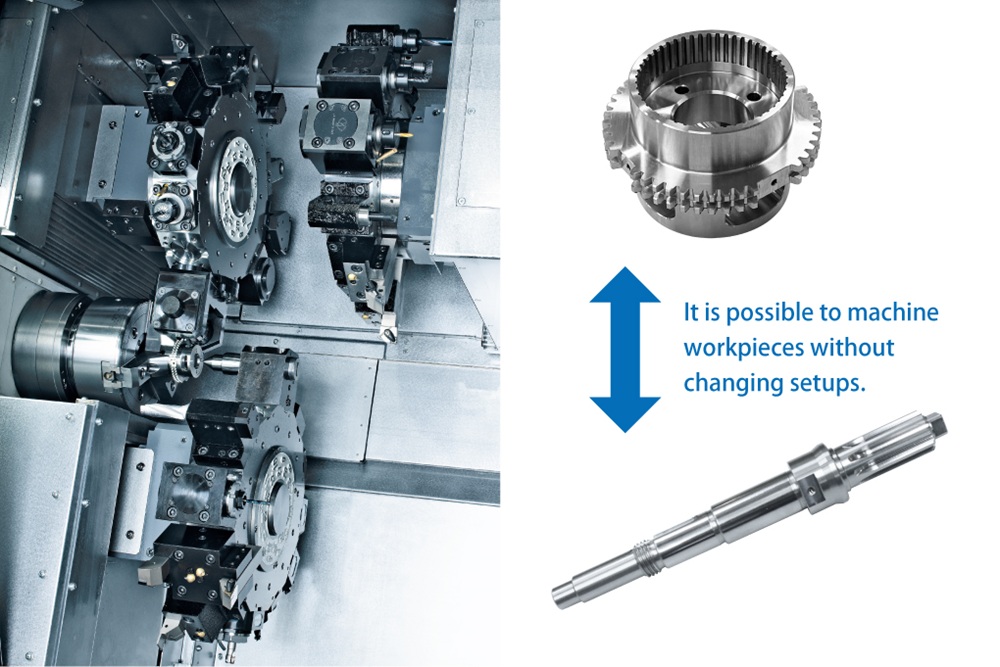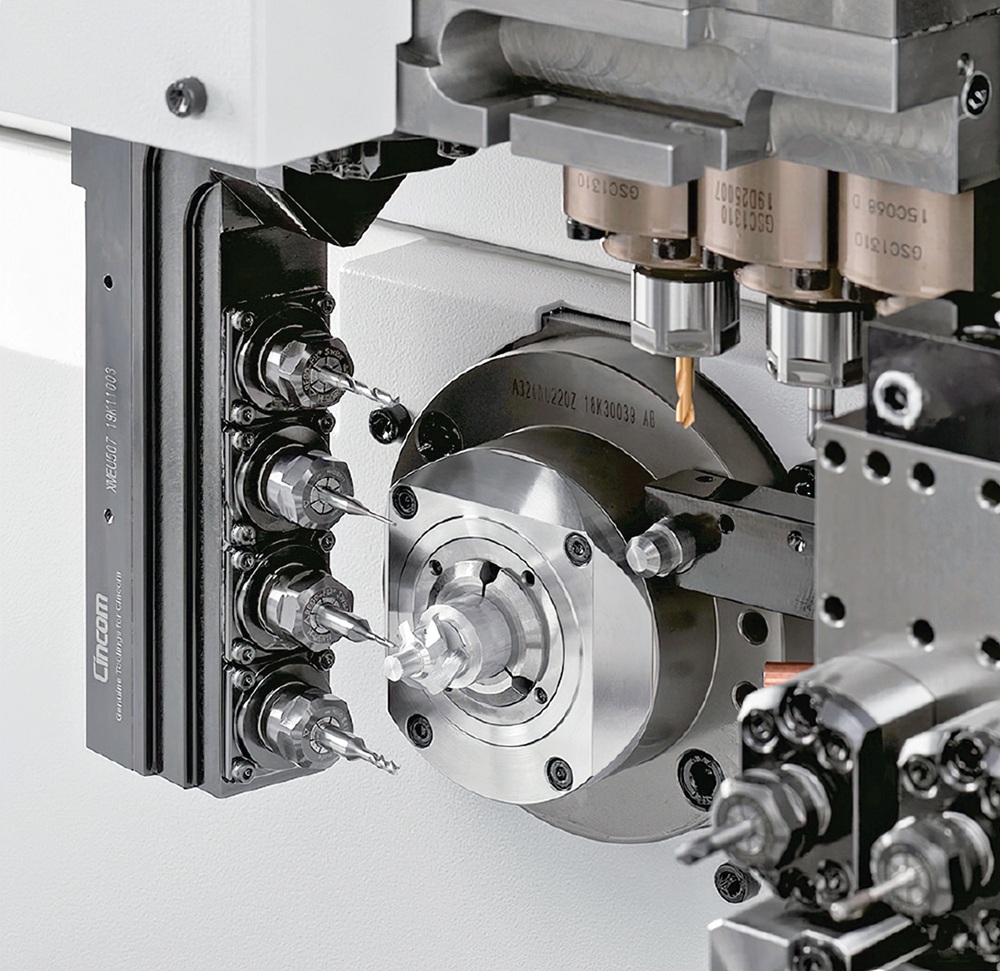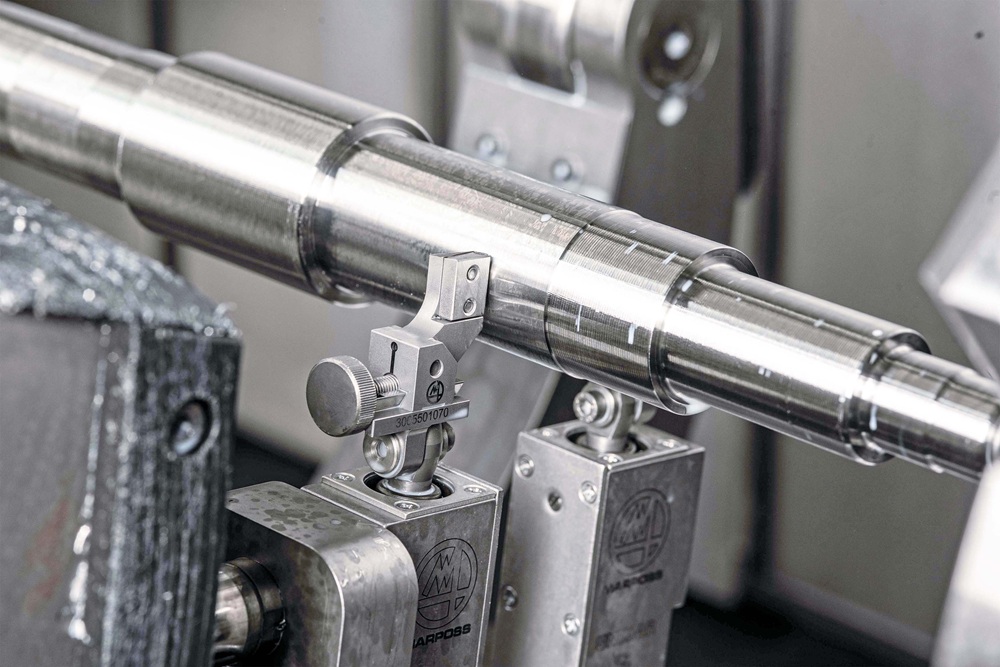With 960 m² of efficiency and precision, Okuma Europe says it will transform EMO 2025 (Hanover, Germany, 22-26 September) into a showroom with live machining demonstrations that include European and world premieres.
Okuma customers will already be familiar with the LB4000 EX III horizontal lathe, but they will now have the opportunity to experience its full configuration versatility for the first time at EMO 2025. During the trade fair, the machine will be exhibited with milling tools, an additional Y axis and an optional sub-spindle. The latter enables automatic workpiece transfer and complete machining within one machine.
Among the 13 machines that Okuma will present at EMO are several enhanced classics, each demonstrating its advantages in any production environment. These include the Multus U3000 multi-tasking machine, which can perform complex machining operations with precision. This is made possible by flexible five-axis machining on the main and sub-spindles, a large workspace, and a tool magazine that accommodates up to 120 tools. A second turret also reduces cycle times and increases productivity.
Various processes will be demonstrated live on the machine at the booth, including friction stir welding. This technology enables the seamless joining of components, increasing flexibility and productivity by eliminating the need for external processes.
Efficient automation is also a key factor in the success of one of Okuma’s best sellers. The company says its LB3000 EX III is considered one of the most advanced horizontal lathes for the precise machining of individual parts and small to medium-sized batches. The machine’s built-in Armroid automation solution, with an extended gripping range, boosts its productivity even further.
More information https://promo.okuma.eu/emo/



















